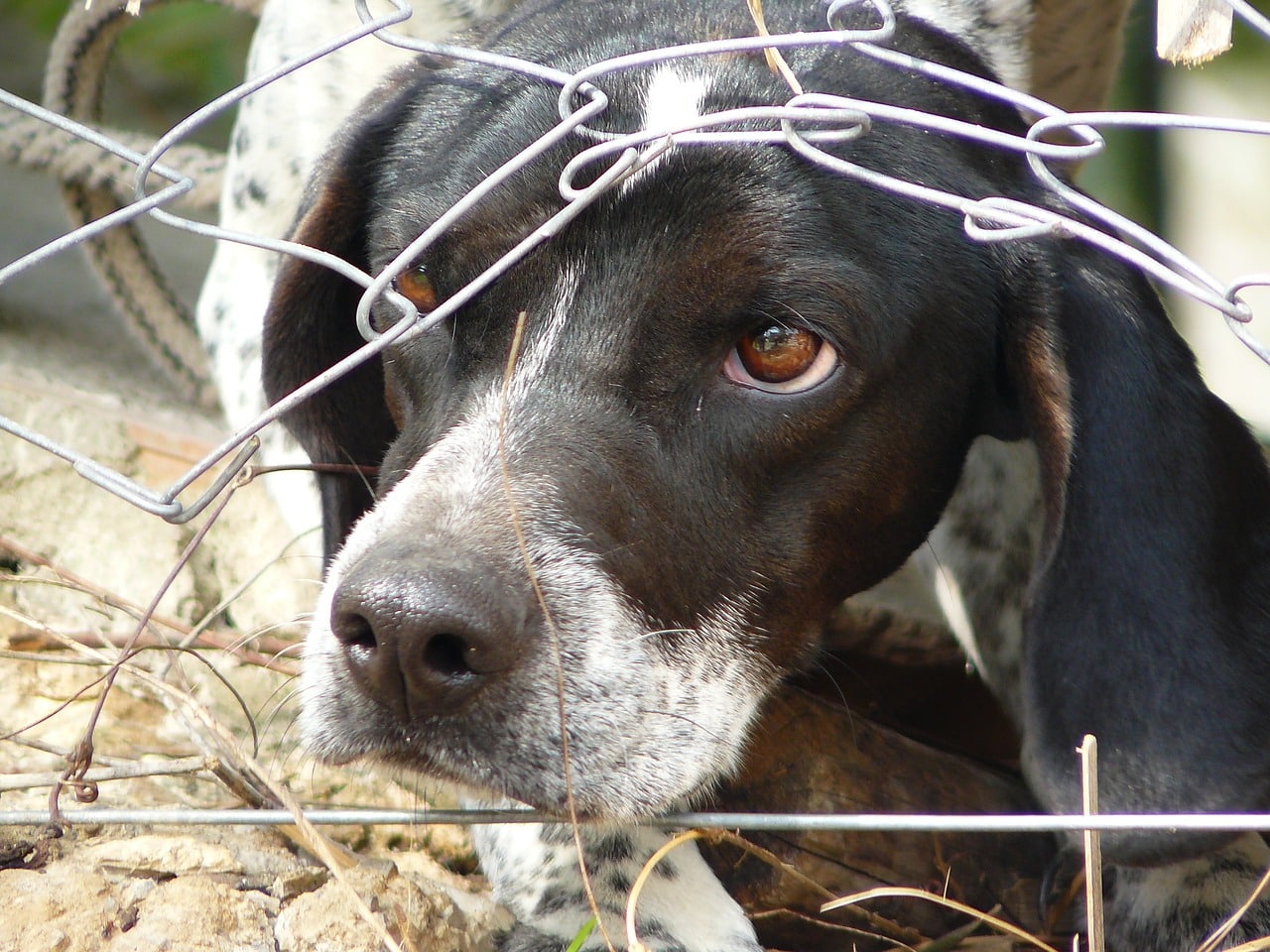Imagine welcoming a new furry friend into your home, an adorable rescue dog with a troubled past. As you embark on the journey of rehabilitating this four-legged companion, you'll discover the incredible transformative power of love, patience, and understanding. Through positive reinforcement training, creating a safe and comforting environment, and offering consistent routines, you will witness firsthand the remarkable resilience and capacity for healing that these resilient creatures possess. Join us as we explore the process of rehabilitating a rescue dog with a troubled past and uncover the joy and fulfillment that comes from providing a second chance at happiness.
Understanding the Rescue Dog's Background
When welcoming a rescue dog into your home, it's essential to gather as much information as possible to understand their background. Whether you're receiving information from the shelter or previous owner, this knowledge can offer valuable insights into the dog's history. It's essential to inquire about the dog's previous living conditions, any traumatic experiences or mistreatment they may have undergone, and any behavioral patterns that may have developed as a result.
Gathering information from the shelter or previous owner
One of the first steps in understanding a rescue dog's background is talking to the shelter staff or the previous owner if available. They can provide you with details about the dog's age, breed, medical history, and any behavioral issues or past traumas they may have experienced. Gathering this information will give you a foundation for creating an effective rehabilitation plan tailored to their specific needs.
Identifying any traumatic experiences or mistreatment
Understanding any traumatic experiences or mistreatment the rescue dog has endured is crucial in providing the right kind of support and care. If the dog has been subjected to neglect, abuse, or a challenging environment, it may lead to various behavioral issues such as fear, aggression, or anxiety. Knowing the extent of these experiences can help you address and work through them with patience and compassion.
Understanding the dog's behavioral patterns
Observing the rescue dog's behavioral patterns will allow you to gain further insight into their unique personality and needs. Pay attention to their body language, reactions to certain stimuli, and interactions with people and other animals. This understanding will help you provide appropriate training, socialization, and support to help them overcome their past and thrive in their new environment.
Establishing a Safe and Calm Environment
Creating a safe and calm environment is vital in helping a rescue dog feel secure and begin the journey of rehabilitation. By following a few simple steps, you can set the stage for their emotional well-being and trust-building process.
Creating a designated space for the dog
Dogs, especially those with a troubled past, benefit from having a designated space they can consider their own. Whether it's a crate, a specific room, or a cozy corner with a comfortable dog bed, providing them with a place to retreat to can help them feel safe and secure. Make sure the space is quiet, away from noisy areas of the house, and equipped with their essentials like food, water, and toys.
Removing potential triggers or stressors
To create a safe environment for your rescue dog, it's crucial to identify and remove any potential triggers or stressors that may cause fear or anxiety. This can include loud noises, crowded areas, or certain objects. By minimizing these triggers, you can help your dog feel more at ease and prevent them from becoming overwhelmed or displaying unwanted behaviors.
Providing a comfortable and secure sleeping area
A good night's sleep is essential for any dog, especially one that is going through rehabilitation. Providing a comfortable and secure sleeping area not only promotes physical rest but also contributes to their emotional well-being. Choose a cozy bed or crate and place it in a quiet area where they can relax without disturbances. This will help create a positive association with sleep and contribute to their overall sense of security.

This image is property of pixabay.com.
Building Trust and Bonding
Building trust and establishing a strong bond with your rescue dog is a critical step in their rehabilitation journey. Patience, positive reinforcement, and quality time together can help them develop a sense of security and strengthen your relationship.
Allowing the dog to adjust at their own pace
Every rescue dog will have their own unique timeline for adjusting to their new home and family. It's crucial to let them set the pace and give them the freedom to explore their surroundings and build trust at their comfort level. Avoid overwhelming them with too many new experiences or interactions at once and be patient as they gradually become more comfortable with their environment.
Using positive reinforcement techniques
Positive reinforcement techniques are incredibly effective in building trust and teaching new behaviors to your rescue dog. Reward them with treats, praise, and gentle petting when they display desired behaviors or make progress in their training. This positive association will motivate them to continue learning and reinforce the bond between you.
Spending quality time together through play and exercise
Spending quality time together through play and exercise not only benefits your rescue dog physically but also emotionally. Engage in activities that they enjoy, such as playing fetch, going for walks, or participating in interactive games. This time spent together will further strengthen your bond and help them associate positive experiences with you as their caregiver.
Socializing with Other Dogs and People
Socialization is a crucial aspect of rehabilitating a rescue dog who may have had limited exposure to other dogs and people. By introducing them to new experiences and environments in a controlled and positive manner, you can help them overcome their fears and develop confidence in social situations.
Gradually introducing the dog to new dogs and people
When introducing your rescue dog to new dogs and people, it's crucial to do so gradually and with caution. Start with low-stress environments and controlled interactions, such as meeting well-behaved dogs or calm individuals. Slowly increase the exposure, always keeping a close eye on their reactions and ensuring their safety.
Supervised interactions to ensure safety
During the socialization process, it's important to supervise all interactions between your rescue dog and other dogs or people. This allows you to observe their behavior, intervene if necessary, and ensure their overall safety. Maintain a calm and reassuring presence to help them feel supported and comfortable in these new social situations.
Encouraging positive associations with socializing
To help your rescue dog develop a positive association with socializing, reward them with treats, praise, and encouragement when they display calm and friendly behavior. This positive reinforcement will reinforce their confidence and help them overcome any past anxieties or fears they may have associated with social interactions.

This image is property of pixabay.com.
Implementing Basic Obedience Training
Basic obedience training is an essential part of rehabilitating a rescue dog, as it helps establish structure, communication, and a sense of confidence. It lays the foundation for further training and behavioral development.
Teaching essential commands like sit, stay, and come
Start with teaching your rescue dog essential commands such as sit, stay, and come, as these form the building blocks of obedience training. Use positive reinforcement techniques, offering treats and praise when they correctly follow the commands. Consistency, repetition, and patience are key to their learning process.
Using rewards and treats to reinforce desired behaviors
Positive reinforcement through the use of rewards and treats is a highly effective training method for rescue dogs. When your dog displays a desired behavior, such as sitting or staying, immediately reward them with a treat and verbal praise. This creates a positive association with the behavior and motivates them to repeat it in the future.
Consistency and patience in training sessions
Consistency and patience are vital when training a rescue dog. Keep training sessions short, frequent, and consistent, ensuring you are using the same cues and rewards each time. Allow them time to process and understand the commands, and be patient as they learn and gain confidence in their abilities.
Addressing Fear, Anxiety, and Trauma
Many rescue dogs may struggle with fear, anxiety, or trauma due to their past experiences. Addressing these issues with the help of a professional can greatly assist in their rehabilitation process.
Consulting with a professional dog behaviorist or trainer
For dogs with significant fear, anxiety, or trauma, consulting with a professional dog behaviorist or trainer is highly recommended. These experts have the knowledge and experience to assess and address these complex issues, providing specialized techniques and guidance that can help your rescue dog overcome their challenges.
Implementing desensitization and counter conditioning techniques
Desensitization and counter conditioning techniques are often used to help rescue dogs overcome their fear, anxiety, or trauma. This involves gradually exposing them to the source of their fear or trigger in a controlled and positive manner, allowing them to associate it with positive experiences rather than negative emotions. This process should be done under the guidance of a professional to ensure safety and effectiveness.
Creating a predictable routine to reduce stress
Creating a predictable routine can greatly reduce stress for your rescue dog. Dogs thrive on consistency and structure, and having a daily routine with set meal times, walks, and training sessions can help them feel secure and in control. This predictability can alleviate anxiety and provide a sense of comfort for your dog as they transition into their new life.

This image is property of pixabay.com.
Dealing with Aggression or Reactive Behaviors
Some rescue dogs may display aggression or reactive behaviors as a result of their past experiences. It's crucial to address these issues carefully and seek professional help when necessary to ensure the safety of both your dog and those around them.
Identifying triggers that cause aggression
Identifying the triggers that cause aggression or reactive behaviors in your rescue dog is a crucial step in addressing these issues. Observe their behavior closely and take note of what situations, people, or stimuli elicit a negative response. This information will help you create a plan to manage these triggers and work towards modifying their behavior.
Using positive reinforcement to redirect negative behaviors
Positive reinforcement can be a powerful tool in redirecting and modifying aggressive or reactive behaviors. By rewarding your dog for displaying calm and appropriate behavior in situations that would typically trigger a negative response, you can gradually replace those behaviors with more desirable ones. This approach should be implemented under the guidance of a professional to ensure safety and effectiveness.
Seeking professional help for severe cases
For rescue dogs with severe cases of aggression or reactive behaviors, it's imperative to seek professional help. A professional dog behaviorist or trainer can assess the situation, identify the underlying causes, and develop a tailored training plan specific to your dog's needs. These experts can provide you with the guidance and support necessary to address and manage these challenging behaviors effectively.
Providing Mental and Physical Stimulation
Providing mental and physical stimulation for a rescue dog is crucial for their overall well-being. Engaging them in activities that challenge their mind and body can help alleviate boredom, increase their confidence, and redirect their energy in a positive way.
Engaging the dog in puzzle toys and interactive games
Puzzle toys and interactive games are excellent tools to provide mental stimulation for your rescue dog. These toys require them to think and problem-solve, keeping their minds engaged and active. Choose toys that are suitable for their skill level and introduce them gradually, providing guidance and assistance as needed.
Regular exercise to release excess energy
Regular exercise is essential for a rescue dog's physical and mental health. Engage them in daily walks, runs, or play sessions to help release their excess energy and keep them physically fit. Incorporating activities like fetch, agility training, or swimming can further challenge them mentally and provide an outlet for their energy.
Training sessions to challenge the dog's mind
Training sessions not only reinforce obedience commands but also provide mental stimulation for your rescue dog. Introduce new skills or advance their training to keep their minds challenged and engaged. This not only helps them learn and improve their behavior but also strengthens the bond between you through positive interactions and teamwork.
Managing Health and Well-being
A rescue dog's health and well-being play a significant role in their rehabilitation journey. Ensuring they receive regular veterinary care, addressing existing health issues, and maintaining their physical and emotional well-being are vital for their overall progress.
Scheduling regular veterinary check-ups
Regular veterinary check-ups are crucial for monitoring your rescue dog's health and addressing any underlying medical conditions. Schedule routine visits to ensure vaccinations are up to date, address any concerns or symptoms, and receive guidance on nutrition and overall care.
Addressing any existing health issues or injuries
Some rescue dogs may have pre-existing health issues or injuries that require attention and treatment. Consult with your veterinarian to address these issues and develop a plan for managing them effectively. Providing the necessary medical care will contribute to their overall well-being and enhance their rehabilitation process.
Maintaining a balanced diet and proper grooming
A balanced diet and proper grooming are essential for your rescue dog's physical health. Consult with your veterinarian for dietary recommendations specific to your dog's needs and age. Additionally, regular grooming, such as brushing their coat, trimming their nails, and cleaning their ears, helps keep them comfortable and healthy.
Patience, Persistence, and Unconditional Love
Rehabilitating a rescue dog requires patience, persistence, and unconditional love. Understanding that their journey will take time and celebrating small victories along the way will contribute to their overall progress and well-being.
Understanding that rehabilitation takes time
Rehabilitating a rescue dog with a troubled past is not an overnight process. It takes time for them to heal emotionally, learn new behaviors, and develop trust. Understanding and accepting this will allow you to approach their rehabilitation with a realistic and patient mindset.
Celebrating small victories and milestones
As your rescue dog makes progress in their rehabilitation journey, it's important to celebrate their small victories and milestones. Whether it's successfully following a command, showing increased confidence in social situations, or displaying a calmer demeanor, acknowledging and praising these achievements will reinforce positive behaviors and encourage further growth.
Providing a supportive and loving environment
Above all else, providing a supportive and loving environment is key to the successful rehabilitation of a rescue dog. Shower them with unconditional love, patience, and understanding. Be their constant source of comfort and support, and offer reassurance in moments of fear or uncertainty. By creating a nurturing environment, you set the stage for building their trust and allowing them to thrive in their new life.


